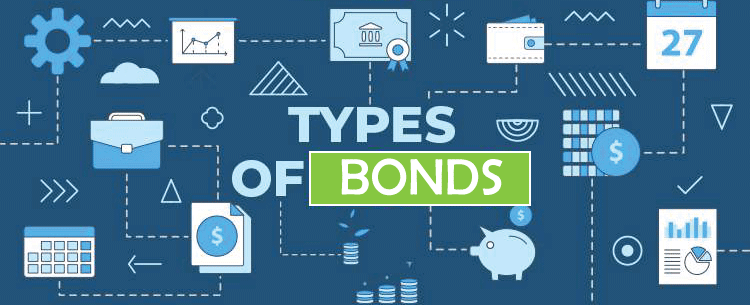Difference Between Bond and Debenture
Every form of business, including tiny businesses, well-established corporations, and even the government, needs money to operate.

One of the most typical methods of obtaining more income is through loans. The two most popular methods of borrowing money are bonds and debentures. Both are debt securities that have been issued by either the government or businesses. Bonds are sold by the organization to obtain funds, and investors are guaranteed a certain rate of return on their investment in the form of interest and principal payments. These contracts come in a variety of forms depending on their nature and the benefits they give.
Let's take a closer look at what they signify and how they operate.
What Is a Bond?
An investment in fixed income, known as a bond, replicates a loan from a shareholder to a borrower (typically corporate or governmental). A bond is an agreement outlining the terms of the loan and its payments between the lender and borrower. Bonds are used by businesses, state and municipal governments, local governments, and other forms of government to fund operations and capital investments. Bondholders are either creditors or debtors of the issuer.

A bond's features frequently contain the conditions of the borrower's variable or fixed interest payments as well as the deadline by which the loan's principal must be returned to the bond owner.
Types of Bonds

- Traditional bond: A typical bond enables the bondholder to redeem the whole principal sum at once when the bond matures.
- Bond with a call option: The bond issuer can exercise an option to call the bond. Bonds are referred to as callable bonds when the issuer exercises their option to redeem them before their maturity. A callable bond allows an issuer to change the debt level of a high-debt bond to a low-debt bond.
- Bonds with a fixed coupon rate: These bonds have a fixed coupon rate throughout the duration of the bond.
- A floating rate bond: is one whose coupon rate fluctuates throughout the course of the bond's life.
- Putable bond: Putable bonds allow investors to sell their bonds and receive their money back before the bonds are due to mature.
- Mortgage bond: ABS bonds are mortgage bonds. Assets frequently back these bonds. For instance, they could have equipment and real estate backing.
- Zero coupon bond: Bonds having zero-coupon rates are known as zero coupon bonds. They don't pay anything with coupons. They are nonetheless issued at a lower price than their par value. At maturity, the bond issuer gives the Investor the principal. Once the issuer pays the sum in full, the bondholder earns returns.
- Serial bond: A serial bond is one in which the issuer makes annual payments to the investors equal to a portion of the loan amount. This will lower the issuer's total debt liability.
- Expandable Bond: An extendable Bond enables the investor to prolong the Maturity Period.
- Convertible bond: The option to convert a convertible bond's debt into equity is provided to the bondholder in the future (stock). But it relies on factors like the share price. As the interest outflow decreases, these are appropriate for businesses. When investors can profit from the stock's potential growth, they stand to gain from this. But only when the initiative is a success does this occur.
- Dynamic Bonds: Dynamic bond funds are open-ended mutual funds that invest in a variety of durations of debt. They use a dynamic approach to the securities in the portfolio's maturity. Providing the best returns in scenarios with increasing and decreasing interest rates is one of the major goals of dynamic bond funds.
What is a Debenture
The Latin term "debere," meaning to borrow money or take out a loan, is the root of the English word "debenture." It is a debt instrument that could or might not have any collateral as security. They are used by businesses and governments to raise finance by soliciting public loans.
In simple terms, it is a legal document that details the principal investment amount, the interest rate, and the payment schedule. At maturity, the Investor receives both the principal and interest.

In the case of a failure, the Investor has no claim to the company's assets, making them comparable to unsecured loans. The sole factor determining repayment is how creditworthy the issuing business is.
However, before giving stock dividends to its shareholders, the issuing company would arrange the debt interest payments. Companies will occasionally provide security for them through a mortgage on an asset. The corporation must ideally liquidate its assets to pay its creditors during liquidation. As a result, before purchasing these assets, investors can examine their credit ratings.
Types of Debentures

- Secured and unsecured debentures: In addition to unsecured debentures, businesses also issue secured debentures, which provide investors with a claim on the issuer's assets.
- Convertible or Non-convertible: After a specified time, convertible ones can be converted into equity shares. In contrast, a non-convertible debt instrument cannot be converted into equity shares.
- Perpetual: The issuer of these bonds is not required to redeem them because they have no maturity date. Instead, the issuer can continue making payments at the same interest rate for the remaining period.
- Fixed Charge or Floating Charge: With the fixed charge type, the coupon rate on unsecured bonds is fixed for the duration of the holding period at a predefined or standard rate. In contrast, when interest rates are variable, they fluctuate in response to changes in their benchmark rate.
Difference between Bonds and Debentures

- Priority in the event of liquidation: In a company's liquidation, bondholders are given priority in repayment before debenture holders.
- Duration: Bonds are often long since they are considered long-term investments. Depending on the requirements of the issuing organization, debentures are frequently granted for a finite period of time.
- Issuing Body: Bonds are frequently issued by financial institutions, governments, large businesses, and other organizations of the same nature. Private companies typically issue debentures.
- Payment structure: Interest payments are made on an accrual basis for bonds. Frequently, lenders get monthly, semi-annual, or yearly payments. The issuing party's business success has no bearing on these payments. Debentures have a regular interest payment schedule that is often based on the issuing company's performance.
- Secured: Since some collateral secures bonds, lenders view them as safe havens. Debentures are riskier since they are less often secured by collateral. They are, therefore, merely backed by the faith and goodwill of the issuing party. Another factor is that credit rating agencies often evaluate and rate companies that issue bonds.
- Collateral requirement: Bonds must be secured by collateral. Most of the time, well-known and reputable public firms issue debentures without security since investors are willing to acquire them based only on their trust in such businesses. On the other hand, debentures might be either secured or unsecured.
- Interest rate: Bonds often have lower interest rates since they will be more stable in future payments. Additionally, all bonds are secured by collateral. On the other hand, debentures provide a higher interest rate because they typically lack security and are only supported by the issuer's good name.
- Convertibility into shares: Some debentures can be converted into equity shares, while bonds cannot. If convertible bondholders believe that the company's stock will increase in value in the future, they may convert their debentures into shares. Convertible debentures do, however, pay less interest than other fixed-rate investments, so this should be considered.
Tabular Difference
| Basis |
Debenture |
Bond |
| Description |
Debentures aid in raising capital for either the long or short term. It might be secured or unsecure. |
Bonds are a form of financial instrument that businesses, banks, and political bodies may use to solicit your financial support. The bond's maturity date is when they commit to paying you interest on the loan. Bonds are secured by collateral, which can be either cash or physical assets. |
| Lender/Issuer |
Private enterprises usually issue debentures to fulfill their short-term financial requirements. |
Bonds are issued by businesses, financial institutions, and governmental entities to fund their long-term capital needs. |
| Estimations |
Debentures =(assets - liabilities+ bonds + shareholder reserve). |
Assets - (Liabilities + Shareholder's Equity) = Bonds |
| Collateral |
A secured debenture is one that is backed by collateral. Debentures are not usually physically secured by the assets of the issuing corporation as security. One must rely on the credit ratings of the issuing corporation as security. |
Collateral or the physical property of the issuer |
| Interest rate |
Due to their lower repayment reliability, debentures have high interest rates. They have either a fixed or variable interest rate. |
The interest rate on bonds, sometimes referred to as a coupon, is a fixed amount that must be repaid at regular intervals until the bond matures. Since their future repayments are predictable and they have strong collateral backing, their interest rates are low. |
| Duration |
Investing in debentures is done with a purpose in mind. Its tenure may be brief or lengthy, depending on the objective the organization seeks to achieve. Compared to bonds, debentures frequently have shorter periods. |
Bonds are investments that should be made over the long term. The term is decided by its issuer. Bonds sometimes have a duration that is longer than that of debentures. |
| Holding Entity |
When you acquire debentures, you are referred to as a "debenture holder." |
When you obtain bonds, you are considered a "bond holder." |
| Structure of Payment |
According to the prospectus, interest on debentures is paid on a regular basis. The performance of the issuing corporation will determine this interest. |
Bond interest is paid on an accrual basis monthly, semi-annually, or yearly. The effectiveness of the business has no impact on these payments. |
| Convertibility |
Convertible debentures are types of debt obligations that can be changed into equities at a certain point in time. |
Bond lacks this characteristic. |
Conclusion
You can invest in both bonds and debentures, which are debt products. However, it is up to you to choose whether to take risks or play it safe. Bonds are your go-to investment if you fall into the first category.
However, investing in debentures of reputable corporations may earn you lucrative interest repayments and stock in the company if you choose to play with stakes. You should begin by investing in bonds if you are new to the game and then progressively move on to debentures.
After weighing your alternatives and other criteria, including interest rates, payback terms, etc., you can invest in one or both debt products.
|






 For Videos Join Our Youtube Channel: Join Now
For Videos Join Our Youtube Channel: Join Now










